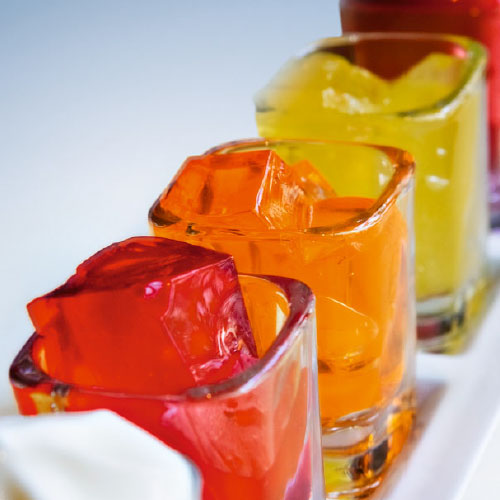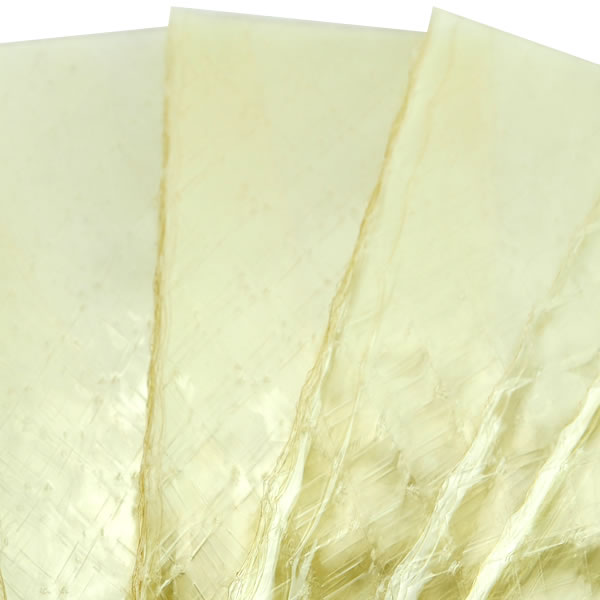

GELATIN SHEETS SILVER SKIN
In most common large scale productions, gelatin is extracted from pig skin (which is collagen rich), and dried into either powder or sheet form (see previous post to learn the difference between the two). Collagen is a simple triple helix of gelatin, and when heat and moisture are applied, the collagen unravels into three, separate gelatin strands.

Gelatin is a hydrocolloid (meaning it can suspend or trap molecules) derived from the collagen found in animals.
GELATIN SHEETS SILVER HOW TO
Now that you understand the various types of gels available to you on the market, it’s time discuss how to actually use gelatin. In our previous video post, we discussed the difference between gelatin sheets and powder, and settled on a use percent range of 0.6% on the low side to about 1.7% on the high (firmer) side. How To Use Gelatin (Hydration + Incorporation) This makes it easy to find your gelatin’s sweet spot and is another great argument for why you should always be standardizing your recipes by weight (good scales are only $25, so stop procrastinating!).Īs we discussed in this video, I recommend starting at 1% gelatin by your liquid’s weight (purely because it’s easy to calculate), and then scale the gelatin up or down accordingly, of course, keeping notes as you go. 6% on the low side to 1.7% on the high side.
GELATIN SHEETS SILVER PROFESSIONAL
Professional chefs prefer sheets over powdered because the former will set a clearer, cleaner tasting gel as compared to the latter, which can sometimes have anti-caking agents and other impurities, resulting in a more opaque gel with a “dirtier” flavor.īut here’s the silver lining that you need to pull from this whole discussion: the general use percent for any given form of gelatin runs from about. If it helps any, silver with a bloom strength of 160 and an average weight of 2.5g, is the most common grade of gelatin sheet found in the professional kitchen so if you’re going to make the switch from powder, I think silver is your best option. In fact, I’ve been pulling my hair out trying to figure this whole thing out, and the only thing I can think of is to make volumetric recipes easier to standardize, meaning once you get used to a particular sheet, you stick to it, and you know that x amount of sheets per cup of liquid is what your prefer for a particular result. So this leads to the natural question of.if their gelling powers are pretty much the same, then why are their different grades of sheets in the first place?Īnd what is the answer? I have no idea. To compensate for the fact that one sheet has a higher bloom strength than another each grade of gelatin is weighted differently, making their overall ability to set a gel, more or less equal.

Yes, it’s true that silver will set a more “rigid” gel than bronze, but the same results can be obtained by simply using more bronze sheets. Now I must admit, knowing the bloom strength of various “grades” of gelatin is pretty useless. This means that gram for gram, platinum will set a stronger gel than gold, silver a stronger gel than bronze, etc. Each grade is associated with various “bloom strengths,” or their ability to set a gel. The subject of gelatin sheets can get confusing due to their separation into grades, which are bronze, silver, gold and platinum. This makes them easy to adapt to almost any recipe without much adjustment required.

If purchasing gelatin sheets, I would recommend the silver grade, since they’re the most common in professional recipes and have an intermediate level bloom strength. If you’re interested in working with gelatin sheets but your local supermarket only carries powder, you can easily purchase them on, in their various grades. Yet with the advent of professional level cook books, gelatin in sheet form is quickly becoming easier to find. Gelatin sheets are almost exclusively used in the professional kitchen, versus powder, which is more common in supermarkets. To lay a firm foundation, I thought it was best to start our discussion with the two major types of gelatin available to cooks, sheets and powder. In this three part video series, we discuss one of the most common gelling agents used in the western kitchen, gelatin.


 0 kommentar(er)
0 kommentar(er)
